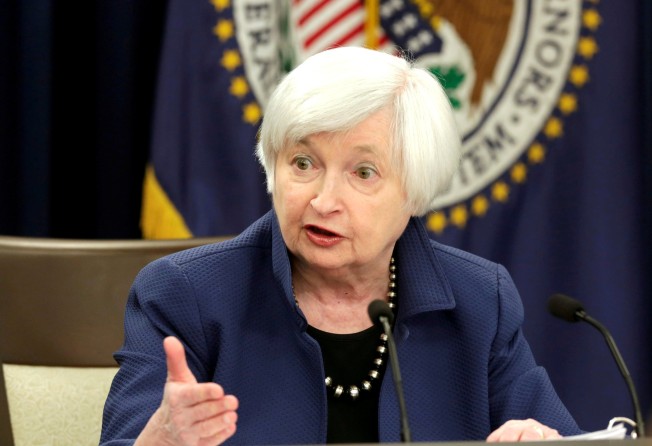Investors must watch what the Fed does, not what Yellen says

Too much rides on US Treasuries for investors just to take the Federal Reserve at its word. It is the Fed’s actions that matter. As the US central bank closes in on balance-sheet reduction, investors should not just assume everything will be alright.
Fed chairman Janet Yellen may have roiled markets last week with comments before Congress that traders interpreted as somewhat more dovish. But actions speak louder than words. US monetary policy tightening is ongoing.
And as the former Dallas Fed chief Richard Fisher said back in April, “since [the Second World War], the Fed has initiated 13 tightening cycles” and “10 of those 13 landed the [US] economy in recession”.
The US central bank has already implemented a number of rate rises and expects to begin shrinking its balance sheet. As for the running commentary, including Yellen’s testimony, it’s arguably just an attempt at crowd control aimed at ensuring the Fed sets the pace of policy tightening rather than the market.
Amid the tightening of monetary policy, US inflation still remains below the Fed’s 2 per cent target. Friday’s US consumer price index data showed just a rise of 1.6 per cent year on year in June, below May’s 1.9 per cent and the 1.7 per cent predicted by economists polled by Reuters.
But investors know that is not necessarily an impediment to tighter US monetary policy.
“It is premature to reach the judgement that we are not on the path to 2 per cent inflation over the next couple of years,” Yellen said last week. “The evolution of the economy will warrant gradual increases in the federal funds rate over time” even if it may “not have to rise all that much further” to reach a neutral level at which it would neither encourage nor curb economic activity.
As for balance-sheet reduction, Yellen herself anticipates that will start later this year. Markets need to decide how that might play out.
Balance-sheet reduction by the Fed represents the beginning of the unwinding of the quantitative easing that the Fed employed as a monetary tool after the onset of the global financial crisis.
That unwinding comes with risks.
“We’ve never have had [quantitative easing] like this before. We’ve never had unwinding like this before,” JPMorgan Chase & Co.’s chairman and chief executive Jamie Dimon said last week. “Obviously, that should say something to you about the risk that might mean, because we’ve never lived with it before.”
Holders of US government bonds cannot afford complacency. Data released last month showed China alone held more than US$1 trillion of US Treasuries as of April.
Conventionally, given the low level of US unemployment, it might be expected that the Fed could smoothly withdraw monetary accommodation to head off inflationary pressures, including from rising wages, in the hope of achieving a Goldilocks outcome where the economy would neither run too hot or too cold.
But can investors assume the conventional scenario will hold?
An alternative narrative has been suggested by W. Ben Hunt, chief investment strategist at US firm Salient Partners, who argues that as “[quantitative easing] was deflationary in practice when it was inflationary in theory, so will the end of [quantitative easing] be inflationary in practice when it is deflationary in theory”.
Hunt’s view is that “the most accommodative monetary policy in the history of the world, with the easiest money to borrow that corporations have ever seen”, tempted US firms to use cheap money “to beat their earnings guidance with a risk-free stock buy-back” rather than taking real risks associated by investing in new plant or staff.
So, “as the Fed slowly raises rates”, Hunt contends, “it will force companies to play it less safe. It will force companies to take on more risk, to invest more in plant and equipment and technology” and “to pay up for the skilled workers they need”.
The combination of balance-sheet reduction and higher US interest rates could, in Hunt’s opinion, “accelerate inflation by forcing risk-taking in the real world”.
That might sound crazy. Even Hunt admits his idea “sounds like a nutty scenario today” but investors cannot ignore the fact that balance-sheet reduction is taking the Fed into uncharted waters.
The quantitative easing unwind, as Dimon said last week, “could be a little more disruptive than people think. We act like we know exactly how it’s going to happen and we don’t”.
As the Fed embarks on balance-sheet reduction, complacency is a luxury that investors cannot afford.